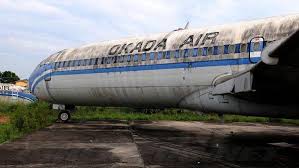As part of innovative measures to remain afloat come next year, more mergers and acquisitions of shipping companies are coming on the heels of soaring cost of operations and shrinking of maritime cargo throughputs.
The growing level of merger of shipping firms showed that the worth of the container consolidation among the five majors currently estimated at $33.4 billion will soon soar with more agreement coming on stream in the New Year.
Latest Fitch Rating showed that muted demand growth would exacerbate overcapacity for the shipping sector in 2017, putting pressure on freight rates and driving further consolidation and defaults.
The international rating agency also expects performance in all segments to be under pressure and has therefore maintained its negative outlook for the sector.
With the persistent crash in the container shipping business, world biggest shipping companies are losing billions of dollars. While some (including Hanjin Shipping) have liquidated, many more firms are finding solace in mergers.
Experts are upbeat that the consolidation moves will further strengthen the capacity of the shipping firms and allow them to stay afloat in business. However, a number of seafarers will be laid off in the repositioning process.
The report also revealed that tanker shipping will face slightly less stress than dry bulk and container shipping, according to Fitch.
Many container shipping and tanker shipping companies had sufficient cash to cover short-term maturities at their most recent reporting date, but they are still reliant on uninterrupted access to bank funding to cover negative free cash flow. This funding is even more critical for companies that are not able to cover their upcoming maturities.
Creditors’ withdrawal of support may indicate a reassessment of the financing landscape, where secured bank funding for new vessels has remained relatively accessible even as market conditions have deteriorated.
Fitch expects more Mergers And Acquisitions (M&A) activity and defaults in the short and medium term. But these will only restore equilibrium and boost freight rates if they prompt capacity reduction.
On the segment of container shipping Fitch expects consolidation to affect companies across the entire segment, with smaller operators focusing on survival through increasing scale while market leaders such as Maersk Line defend their market position through M&A.
The latest statistics revealed by Vessle Value tagged: “2016 Container Consolidation” stated that these top five fleets are currently worth $33.4 billion and account for 33 per cent of the entire container fleet.
According to a senior Analyst at Vessel Value, William Bennett, the breakdown shows that Moller Maersk AS/ Hamburg SUD has total value of $49.9 billion with 319 vessels holding 9.7 per cent of the total global fleet; China Cosco Holdings Co. is valued $47 billion with 190 vessels and 6.9 per cent market fleet; CMA CGM/APL is valued $46 billion with 150 vessels and six per cent market fleet. Also is Hapag-Lloyd/ UASC/ CSAV worth $5.4 billion with 123 fleets and 5.3 per cent of total fleet; and MOL/NYK Line/ K Line valued at $5.1 billion with 129 vessels and 5.2 per cent of market fleets.
Besides, Maersk has paid roughly $4 billion for Hamburg Süd whose fleet is worth $1.5 billion. The deal is expected to complete end 2017. Entry of Hamburg Süd into the 2M alliance will put the alliance into the lead with 15 per cent of global capacity.
The largest acquisition in the French giant’s history, CMA CGM acquired Singaporean company. Recently it was also confirmed that APL would join CMA CGM in the Ocean Alliance which will subsequently represent 14 per cent of global container capacity, second only to the 2M alliance. The acquisition will make the combined fleet the 3rd most valuable in the industry.
Hapag-Lloyd completed their integration of Chilean line CSAV earlier this year. The new merger will bring Hapag-Lloyd’s average age down to 7.8 years from 8.7 years. Hapag-Lloyd and UASC will be the fourth most valuable fleet up from 10th and 8th, respectively.









